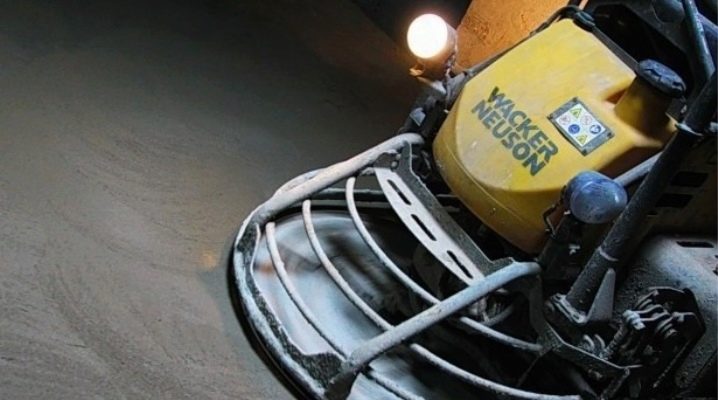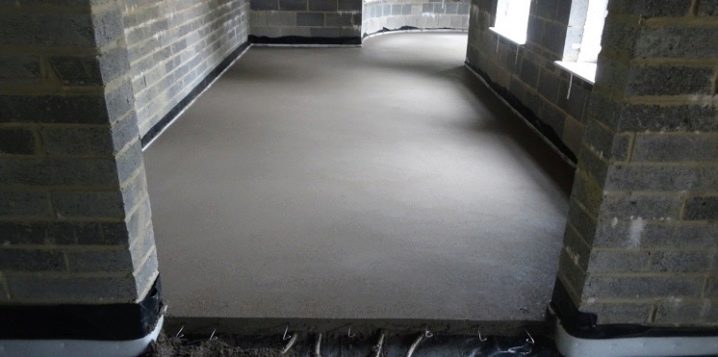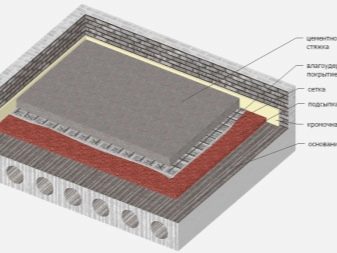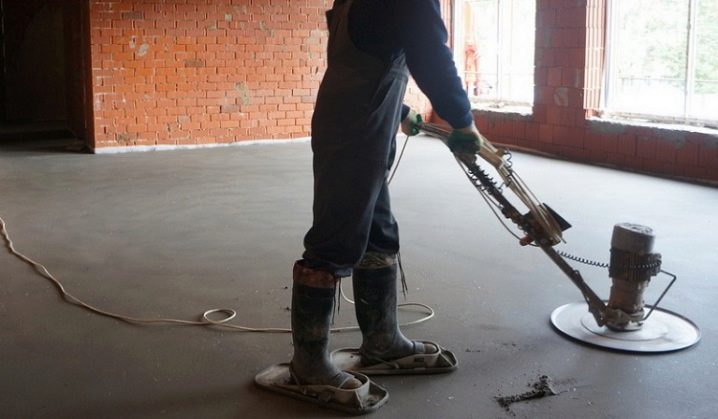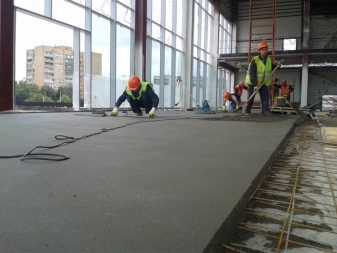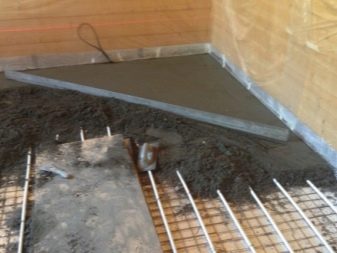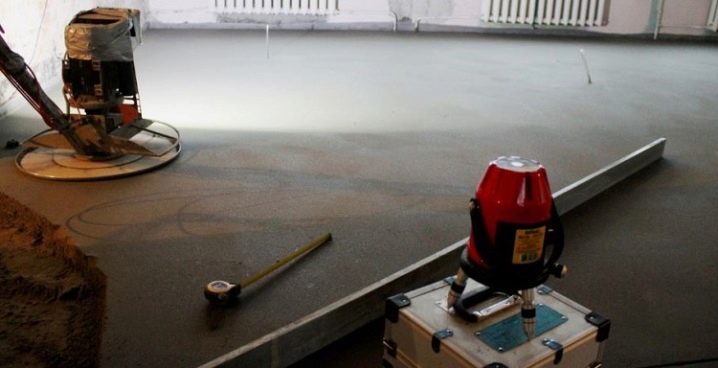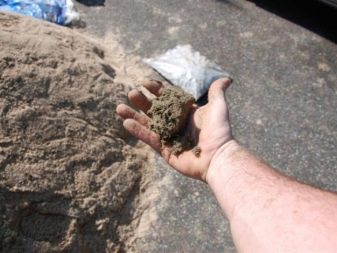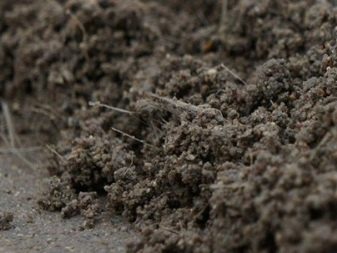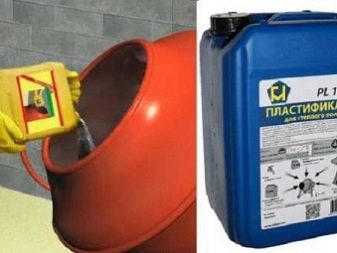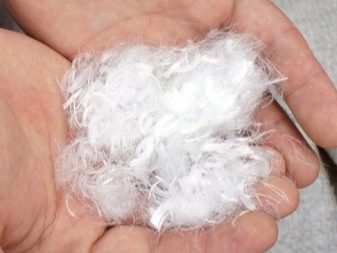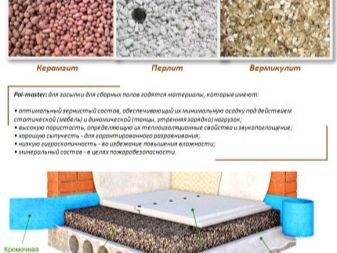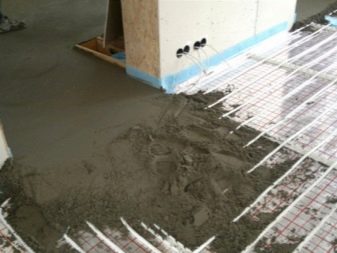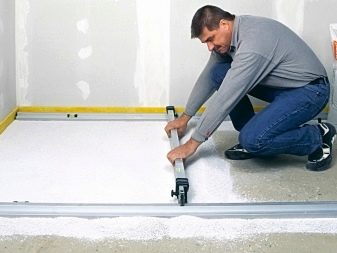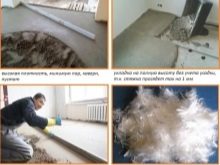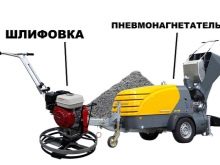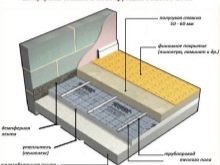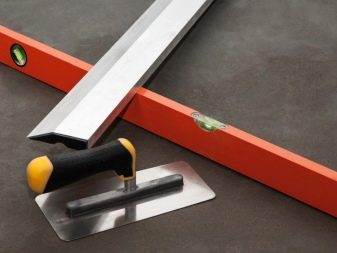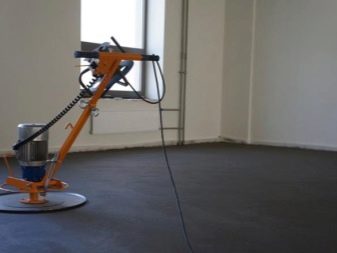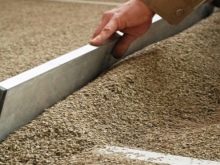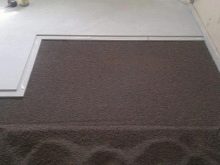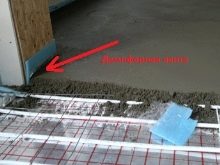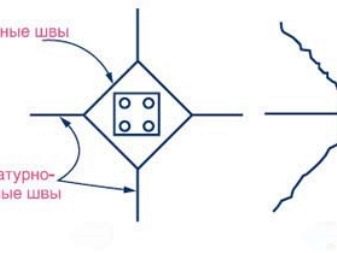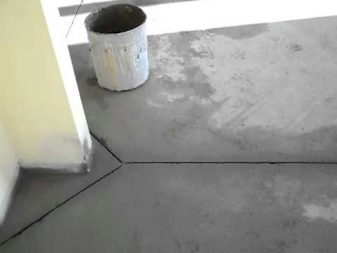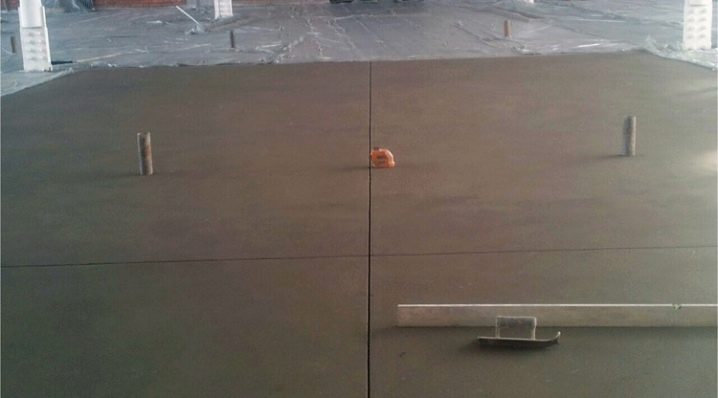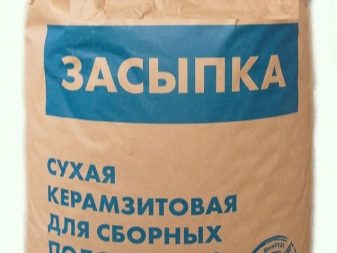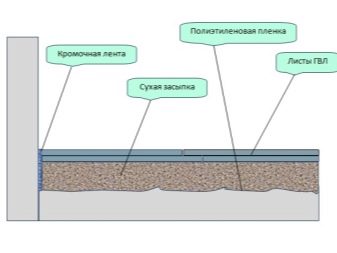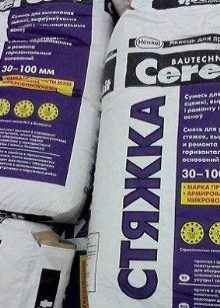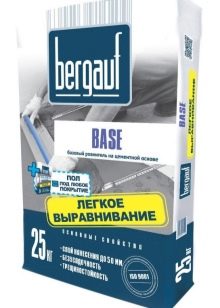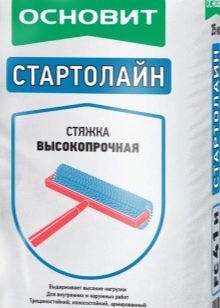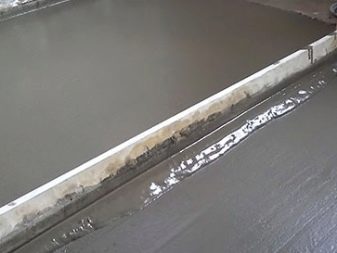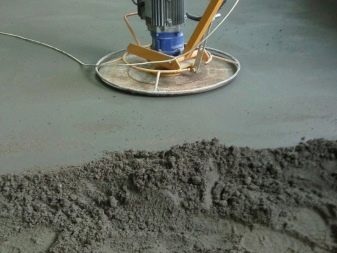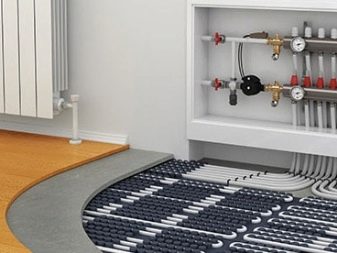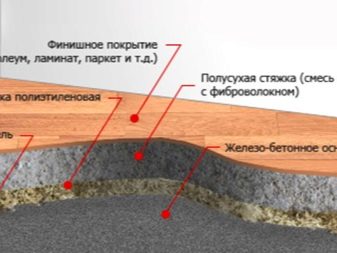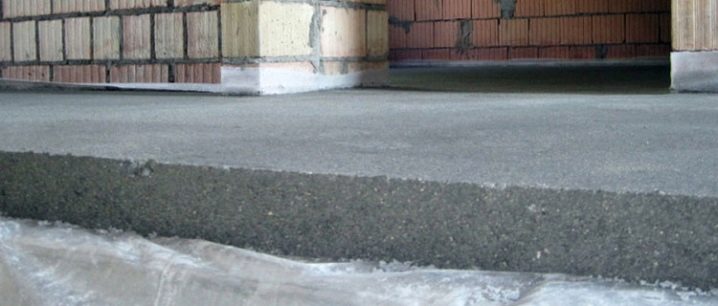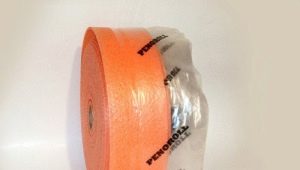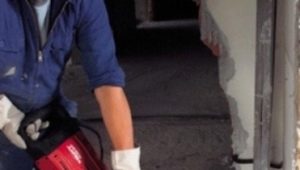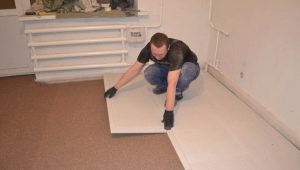Features semi-dry floor screed
Today, apartments in new buildings are sold, as a rule, without interior decoration. Buyers themselves decide how to make ceilings, than to glue or paint the walls, what to lay on the floor. Depending on the type of flooring choose the type of floor screed. Most often, preference is given to the semi-dry form.
What it is?
Only in rare cases, the floor slabs do not have flaws, are fully prepared to take on the finishing finish. Usually after builders the floors remain in an unsightly condition. When the concrete surface is clean, it is necessary to put a tie on it.
The coupler performs several functions at once, it:
- serves as a reliable basis for flooring;
- levels the surface of the floor, making it more rigid and durable;
- protects the room from moisture penetration from basements and subfields;
- is a heat insulator and noise protection.
The semi-dry screed does not require a large amount of water in its composition.It is rather laid out than poured.
This method is applicable in private houses, apartments, old buildings, where the floor floors are made of wood. Semi-dry screeds are widely used in industrial and public places.
Advantages and disadvantages
The semi-dry screed, like any building material, has both advantages and disadvantages. Note the advantages:
- The undoubted advantage is the possibility of laying this type of tie, not only in a new building, private house or cottage. Low water content allows you to do the laying in an apartment on any floor. The possibility of moisture penetration through the floor to the lower floor is completely excluded.
- The surface of the screed is perfectly flat. Air bubbles are present in a minimum amount. When tamping, they are completely displayed.
- With the observance of technology, the appearance of cracks is unlikely. If fiber particles are added to the solution, cracking becomes impossible, and the screed acquires additional strength.
- People living in a panel house or “Khrushchev” often complain about the noise penetrating their living quarters from the upper and lower floors.The semi-dry screed will become a reliable barrier on the path of extraneous sounds.
- On the balcony, including those with cold glazing, a low layer of semi-dry mixture makes the floor much warmer than the “native” reinforced concrete slab.
- This screed is suitable for water and electric floor heating. Its minimum height is enough to protect communications from mechanical damage. It does not absorb much heat. The main share of thermal energy is fed into the room, and does not disappear in the depths of the rough coating.
- Another important plus is quick drying. Few owners are willing to stretch the repair work for long months. Significantly reduce the time of work helps solution with low moisture content.
- The advantages include low cost of materials. Due to this, the arrangement of a good screed is available to the widest circle of the population.
Do not be silent about the shortcomings. These include:
- The difficulty of obtaining the optimal water content in the solution, especially for people who do not have experience in construction. Therefore, to make repairs with your own hands is not always possible.
- Semidry solution is difficult to lay due to low flow.To tamp and align, you have to work hard. It is simply impossible to do this manually on large areas.
- The inability to obtain a low screed. The minimum height is 4 mm.
- With a laying height of 60 mm and more, reinforcement with steel mesh is necessary.
- The high cost of special equipment (when using it).
Composition and materials
The basis of the semi-dry screed is a cement-sand mixture. Portland cement must have a grade not lower than M400. He paired with cement-sand takes one part, the other three get sand. Sand needs clean without impurities. Both loose components should be sieved prior to use to exclude foreign bodies and packed lumps. It is recommended to buy fresh cement (with a good shelf life). Such material should not yet be compressed, and there will be no waste (if the packaging is not damaged).
Knead the solution in water. Its exact amount can not be determined. The volume of liquid will have to pick up in the process. Experts determine the readiness of the mixture to the touch. The solution is compressed in a fist. If the result is a dense, non-decaying lump,no water is released, which means that the batch is ready for pouring.
The appearance of water during the compression of the solution indicates a lack of dry ingredients. And the lack of stickiness - about the lack of water. Since the exact proportions of all the ingredients cannot be immediately determined, you will have to add one or the other (right up to the desired consistency). The solution will become more pliable if you add a plasticizer to it.. This liquid is similar to liquid soap. It requires very little - 1 liter for every centner of cement.
To give greater strength semi-dry screed reinforced with fiberglass. Thin particles are randomly distributed throughout the volume, thereby increasing the strength characteristics of the monolithic slab. Someone will say that he already had to do the mortar himself, and the reinforcement was done with a steel mesh. You can, of course, use the old way. But the metal increases the load, and the binding of parts of the grid takes a lot of time.
When the reinforcement is placed in the middle of the screed, it is necessary to lay out the solution in two layers. Polypropylene needles give the best result with a minimum of physical effort.
In cases where you want to raise the floor to a height of more than 70 mm, to reduce the load on the base of the screed do team. Cement-sand mixture is combined with expanded clay. Light granules give the desired height, they lay out the prepared solution. Semi-dry screed falls into the category of floating.
This means that it does not have contact with the base, is poured on an insulating substrate (for example, on a polyethylene film). The film is not only under the screed, but also comes on the walls (the entire height of the cement layer). In addition to the film, a damper tape, glued around the perimeter of the premises being repaired, separates the walls.
Technology
According to the German technology of laying a semi-dry screed, all the works are painted step by step. Deviation from the rules leads to a deterioration in the final result. The cement-sand layer device is preceded by auxiliary work:
Inspect and prepare the base:
- eliminate cracks, potholes and cracks (foam, fill with mortar, putty);
- cut down the sags and bulges;
- remove grease stains;
- the resulting debris is collected and removed (the surface should remain as clean and level as possible);
- the highest and lowest places are found on the floor, markings are made on them;
- lay waterproofing, on the height of the screed lay a damper tape on the walls, partitions and other structures;
- set lighthouses.
The next stage is the preparation of the solution. The mixture should be homogeneous, quite wet. The flexibility of the solution will provide plasticizers, strength - particles of the fiber. For mechanized work will require special equipment:
- mortar pump;
- pneumosupercharger;
- trowel machine
All mechanisms, with the exception of the trowel, are on the street. Their absence in the working area contributes to the acceleration of the process, reducing pollution. The equipment can work even at sub-zero temperatures, but not lower than -10 degrees.
With a light frost around the mechanical devices equip the heat.
Since the optimum temperature of the finished solution should be +5 degrees, heated water (but not boiling water) is used when mixing. The maximum allowable water temperature is + 80 degrees. The heated mixture is cooled during injection to the place of installation.
When doing work with their own hands in the repaired space deliver concrete mixer. If the areas processed by the semi-dry method are small, this unit can replace the construction mixer. To distribute the solution, you will need beacons and a rule. For final processing, you need a grater.
At the final stage, the coupler is covered with polyethylene, if necessary, moisten the upper layer with water. So the solution “reaches” 3-5 days. After removing the film, he needs an exposure for another week.
It is possible to lay a tile in 2 weeks after laying of a coupler. For parquet and laminate flooring, drying is required for 28-30 days.
Styling methods
There are several different ways to arrange the screed:
- the solution can be spread directly onto the prepared substrate without any delineators
- a floating screed is characterized by the presence of a film or other insulator between the base and the solution;
- the solution may not be on the base, and on the substrate, acting as a heater or sound insulator.
Lay the coupler on the beacons immediately to the full height, starting from the farthest from the entrance corner. Compaction and leveling produce immediately after delivery of the solution in place.Otherwise, the process becomes much more difficult or impossible. The heavy mixture becomes softer when a special additive is added to the solution.
To determine the need for a plasticizer, it is necessary to calculate 1 liter of substance per 100 kg of portland cement.
The temperature in the repaired room should not be below +5 degrees. If measurements taken at door and window openings at a height of 0.5 m from the floor surface show a lower temperature, the work should not be carried out. Depending on the base on which the screed is applied, per 1 square meter. m may account for a limited amount of solution. Wooden bases are not able to withstand heavy weight. The screed in such cases is set by lags with a height of no more than 4-5 cm.
Concrete bases can withstand much more weight, but you should not lay a layer more than 7 cm on them. If you need to lift the floor, you should make the team by laying a layer of insulation on the base, for example, from polystyrene foam 30-40 mm thick. The rest of the height is to get a tie.
If the screed is performed on large areas, to prevent cracking during drying should be doneexpansion joints.
To do this, no later than two days after pouring the solution in his body, make cuts of one third of the depth. The width of the cuts is from 3 to 4 mm.
Shallow cuts will not affect the strength of the cement base. After the deformation processes are over, the grooves need to be filled with mortar and rubbed.
Drying time depends on:
- screed thickness;
- room temperature;
- ambient humidity;
The thicker the layer laid out, the longer the floor dries. In summer, the basement will prepare for finishing faster than in winter.
Manufacturing companies
If you refuse to make the solution yourself and purchase the ready-made mixture, the process of arranging a semi-dry screed will be significantly simplified. It is not necessary to extort proportions, calculate the need for additives. Modern mixtures already contain everything you need. It remains only to add water and stir in it acquired composition. The rest of the process is similar to the traditional:
- calculation of the solution;
- alignment by the rule according to the established beacons;
- compaction;
- grout.
The domestic market is supplied by foreign and domestic manufacturers.Rating shows that undisputed leader is the company Knauf. Its mixtures are based on high-quality cements and numerous additives that improve the quality of screeds. On the territory of the Russian Federation there are several enterprises producing products of a famous brand.
In second place is the company Ceresit with a wide range of floor leveling mixes. Third place belongs to a native of Germany Bergauf, whose mixtures allow you to make extremely durable coatings. The Russian producer strives to reach the level of Europeans "Founds". To his credit, while two varieties of powder material. Both are suitable for manual and mechanized use.
Which is better: a regular dry or semi-dry screed?
The question of choosing one or another type of fastener arises when repair time approaches. With careful attention to the problem posed, this question disappears. The choice is given to the technology that fits a specific room. In a garage, production area or sales area, a wet screed will be more appropriate. The floor in such rooms is experiencing increased loads and needs greater hardness than the floor in apartments and cottages.
The semi-dry screed is used to level the floor in office and residential premises. A small amount of water prevents the base from getting wet and leaking to the lower floors. Due to the fact that the ready mix is sold for semi-dry screeds, this type of coating is gaining popularity.
There is no place for semi-dry screed in bathrooms, showers and kitchens., there is too wet. And on the wooden flooring this option will be just right.
It is impossible to compare a semi-dry screed with a dry one. The dry version performs completely different functions. It is laid, first of all, for warming or raising the floor. The bulk material laid between lighthouses or lags is covered with two layers of gypsum-fiber sheets. The seams are glued to prevent the ingress of dust that is present in the bulk filler. The floor for the final finish will be as level as the covering sheets will allow.
If you need a floor in the boiler room, make a wet screed. Want to build a wooden house, get ready for dry fill. If you got an apartment in a high-rise building, buy a ready-made mixture, lay out a semi-dry solution.
Reviews
Reviews of semi-dry screed in the main positive. Those who used it in the installation of the floor, note: it allows you to level the floor in the apartment becomes warmer. It is considered a quick and effective way to give the floor a perfect evenness.
Pleases buyers with the fact that this material dries quickly: a week after pouring in the apartment, you can continue the finishing work.
In the next video, see the comparative review of classic and semi-dry screeds.
